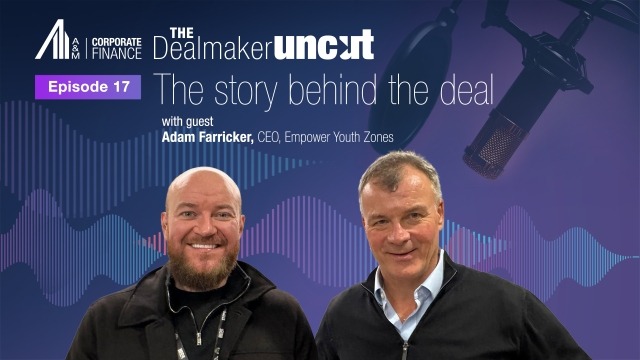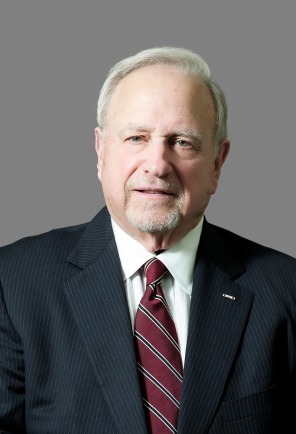Law Partner Retirement Trends
How the view of law partners’ retirement has changed
Changing economic models in law firm partner retirement packages have brought significant change to the profession. As law firms shift financial obligations to partners, post-retirement benefits once seen as a way to attract and retain professionals to the industry grow more precarious. In this edition of Action Matters, Bud Schiff, Managing Director and CEO of A&M’s Executive Compensation and Benefits practice, discusses the growing financial planning concerns of both firms and retirees.
The law firm culture of old
The culture of law firms and their partners’ relationships has dramatically changed over the past several decades. Historically, when a person obtained a partnership in a firm, the relationship became somewhat sacred. The partner expected to stay with the firm for his/her entire working life. However, those loyalties are often not that strong today. One reason may be that active partners are concerned with the increasing cash-flow requirements of the firms’ heretofore generous supplemental, unfunded partner retirement programs.
In the past, a key motivation for partner retirement plans was to provide partners with the financial ability to maintain their lifestyles after they completed their productive years with the firm. Today however, many firms have modified, severely limited or even eliminated these retirement plans. While most firms still maintain some qualified retirement plans, now they typically are defined contribution plans rather than defined benefit plans. And, due to statutory limitations on these plans, qualified retirement plans rarely provide adequate replacement income for highly compensated partners.
The face of law firms today
An important attraction of becoming a partner in a prestigious firm is the anticipation of reaping the financial benefits associated with being part of a dynamic, productive firm, which include sharing in the firm’s success while an active partner, and at least in the past, having confidence that the firm would support them in retirement. This process provided a significant financial incentive to remain loyal to and productive for the firm. It also provided strong recruiting motivation for bringing in future partners.
Today, many firms have established mandatory retirement ages that force active, vital and productive partners to retire at an age when they still have the ability and desire to continue working. It is not uncommon to see these retired partners embark upon new careers.
Partner and Firm concerns
Attracting and retaining key partners can be a major concern for firm management. On the other hand, virtually all partners would like to maintain in retirement the lifestyle their hard work earned. For example, a partner earning $1,000,000 per year before retirement, based on common benchmarks, probably will need 80 percent to 90 percent of that amount in retirement. The primary sources of that post-retirement income will be Social Security benefits, qualified retirement plan benefits, non-qualified retirement plan benefits and personal savings.
The challenge comes from considering the amounts each of these sources will generate:
- Social Security is likely to only provide about $30,000 – $40,000 per year.
- Qualified Retirement Plans are restricted by numerous statutory limitations. Defined benefit (typically “cash-balance”) plans and defined contribution (typically 401(k) and excess) plans must meet various broad-based nondiscrimination tests and statutory maximum benefit and contribution limitations. Even assuming maximum participation and aggressive funding, these plans are not likely to generate more than $400,000 – $500,000 in annual retirement income.
- Nonqualified Retirement Plans are not subject to the same limitations as qualified plans, but they must comply with the requirements of Internal Revenue Code Section 409A, and the firm assets used to satisfy these obligations are vulnerable to the firm’s creditors. While these plans can be intended to make up the additional $400,000 – $500,000 needed, the firm’s ability to meet this obligation is a risk borne by the retirees. Furthermore, the annual cost to the active partners each year can be significant. As the number of retired partners increases, this burden also increases.
- Personal savings must make up the difference required by the retiree, but this is usually a costly way for a partner to generate supplemental income. By investing individually, a partner will not enjoy the “economy of scale” and favorable tax-leverage and cost-efficiency that group investing by the firm can provide.
The impact on active partners making more than $1,000,000 places more burden on nonqualified retirement plans and personal savings since the maximum benefits under Social Security and qualified plans do not exceed the statutory limits as compensation rises.
These issues are complex and significant in planning the financial future of the firm and the future of the retiree.
This material originally appeared in Consulting Magazine.
About the Author
Albert “Bud” Schiff is Managing Director and CEO of Alvarez & Marsal Executive Compensation and Benefits. He previously served as Chief Executive Officer of NYLEX Benefits, the executive benefits consulting arm of New York Life Insurance Company, and Senior Executive Vice President and member of the Board of Trustees of the Mutual Life Insurance Company of New York (MONY).



